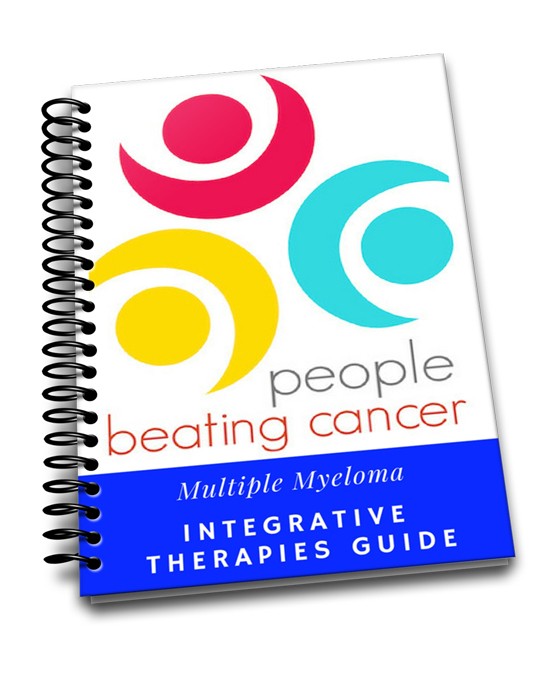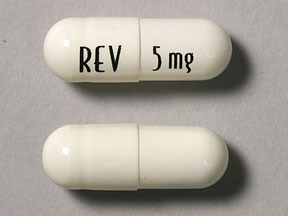
Recently Diagnosed or Relapsed? Stop Looking For a Miracle Cure, and Use Evidence-Based Therapies To Enhance Your Treatment and Prolong Your Remission
Multiple Myeloma an incurable disease, but I have spent the last 25 years in remission using a blend of conventional oncology and evidence-based nutrition, supplementation, and lifestyle therapies from peer-reviewed studies that your oncologist probably hasn't told you about.
Click the orange button to the right to learn more about what you can start doing today.
- You are here:
- Home »
- Blog »
- Healthy Living Products »
- Long-Term Multiple Myeloma Survival- The Keys To Success-
Long-Term Multiple Myeloma Survival- The Keys To Success-

“Furthermore, gene analysis studies show that curcumin enhances the cytotoxic effect of lenalidomide via suppression of the cereblon and multi-drug resistant genes.”
Hello David- I was diagnosed with multiple myeloma in August of 2008. I don’t remember being given a stage. I received an unsolicited prognosis of living 3 years from two doctors. The oncologist simply told me that there was little she could do for me.
The only drugs I have used to treat my multiple myeloma have been Revlimid (lenalidomide) and Zometa. In the past 12 years I have used Revlimid 4 times and zometa quarterly.
I walked away from western medicine at that point and stayed away for 2.5 years, while I learned that all important balance between what western medicine offers and the best of the alternatives.
Although not in a true remission, I have been successful in coexisting with myeloma for almost 12 years now.
When on Revlimid, I can only take 10 mg once a day for 21 days and seven days off. This last time (which ended 2 months ago) was the longest at 7 months. I was quite tired of it when I finally came off. However, I stayed positive throughout the whole treatment regime, and I think that is paramount to success.
Dexamethasone also goes with the Revlimid but I can only tolerate 1 x 4 mg tab a day for two days (instead of the 10 pills on one day) out of the week…and yet it still works.
I am one of those people who are ultra sensitive to all drugs and the dosage must be lowered to fit me….not an average. That is also how I demand to be treated, as an individual, not an average.
I became an author, with one book published and another coming out next month. I also mentor people facing life ending challenges, including myeloma. I am also a inspirational speaker.
I am extremely interested in your regime, especially the intravenous vitamin C (IVC) treatment. Can regular oncology docs use this treatment or do I have to find an integrative doc? I am going to send a link to this site to a trusted myeloma doctor that is quite open to alternatives.
I am looking forward to communicating with you about this and all other myeloma issues. So glad a friend guided me to you. Let’s run with it. Richard D. Rowland
- All newly diagnosed MM patients (NDMM) must consult with a MM specialist-
- The “standard-of-care” therapy plan for early stage newly diagnosed MM patients is too much chemotherapy- too much toxicity-
- #3 is an adjunct to #2- MM patients and survivors can live longer, higher quality of lives, on average, by undergoing low-dose chemotherapy combined with integrative therapies-
- #4 is an adjunct to #3 and #2- The more chemotherapy a NDMM patient undergoes, the sooner he/she reaches multi-drug resistence (MDR). By undergoing low-dose chemo only long enough to manage your MM year-in, year-out, your MM has remained sensitive to Revlimid for these past 12 years.
Let me elaborate on these four key issues.
First and foremost-the benefit of Multiple Myeloma specialists is well-documented. Regardless of NDMM patient age, stage, etc. MM specialists know more about our rare, incurable blood cancer and can give us better info, make better recommendations at every stage of our lives.
- MM Survivor
- MM Cancer Coach
- Director PeopleBeatingCancer
Recommended Reading:
Curcumin enhances the cytotoxic and chemo-sensitising effects of lenalidomide in human multiple myeloma cells
“Background: Curcumin, the active component of the Curcuma longa plant, has been shown to potentiate the effect of the immunomodulatory drugs (IMiDs) thalidomide and Bortezomib against human myeloma cell lines and a nude mice model. Its effect on the other IMid, lenalidomide, has not been evaluated. This study aims to investigate the mechanism of action of curcumin and its potential ability to positively interact with lenalidomide…
Results: Incubation of H929 cells with curcumin (30mM) or lenalidomide (2.5 mM) for 3 days resulted in 26.35% (±1.06) and 30.81%(±2.98) apoptotic cells respectively. When 30 mM curcumin was combined with 2.5 mM lenalidomide, 50.4% (±3.37) apoptotic cells were detected by flow cytometry and the increase was significant compared to either curcumin alone or lenalidomide alone (anova p = 0.0026). Furthermore, gene analysis studies show that curcumin enhances the cytotoxic effect of lenalidomide via suppression of the cereblon and multi-drug resistant genes.
Conclusion: Curcumin exerts a cytotoxic effect additive to that of lenalidomide on H929 myeloma cells, and it also enhances the chemo-sensitizing effects of this agent…”



